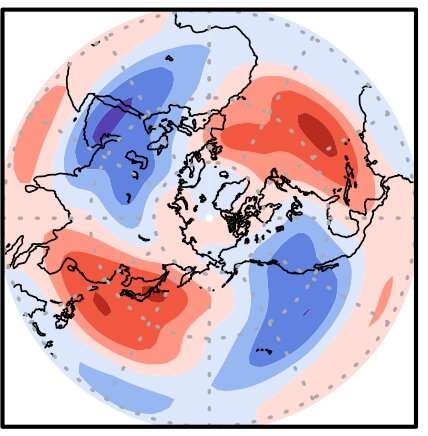September 16, 2022 report
Simulations show increased jet stream waviness due to asymmetric rise in global temperatures

A quartet of researchers, two with the Nordic Institute for Theoretical Physics and two with Pukyong National University, has created a group of simulations of changes to the jet stream under global warming. In their paper published in Proceedings of the National Academy of Sciences, the group describes using math theory to describe wind motion under given circumstances to create their simulations.
Over the past several years, the jet stream has become wavier than it used to be. Both peaks and valleys have become more extreme. This has led to changes in weather patterns—some places have grown wetter and some drier, and there have also been more extended hot and cold spells around the globe. In this new effort, the researchers suspected that the reason for the increased waviness is due to the asymmetric rise in global temperatures. Global warming is heating up the Arctic much faster than it is heating up more southern areas. The result is big changes in winds in the upper atmosphere.
To test their theory, the researchers used math formulas to represent wind flow under historical patterns. They then added the impact of warming air, taking into account the differences above and below the jet stream. They used their formulas to simulate wind flow across the northern part of the planet that make up the jet stream. The simulations showed what the researchers were expecting—more waviness.
More specifically, the researchers found that as conditions in the Arctic region grow warmer faster than regions to the south, the winds that circle the globe have become weaker. That leads to amplified changes in the upper atmosphere. Those changes have been exerting a wavering influence on the jet stream, resulting in not just higher peaks and lower troughs, but more waves in general. The result, they note, is less stability along with an increase in extreme weather events, such as bigger and stronger storms that can lead to damage and flooding—as well as droughts and long stretches of hotter or colder than average weather events.
More information: Woosok Moon et al, Wavier jet streams driven by zonally asymmetric surface thermal forcing, Proceedings of the National Academy of Sciences (2022). DOI: 10.1073/pnas.2200890119
Journal information: Proceedings of the National Academy of Sciences
© 2022 Science X Network




















